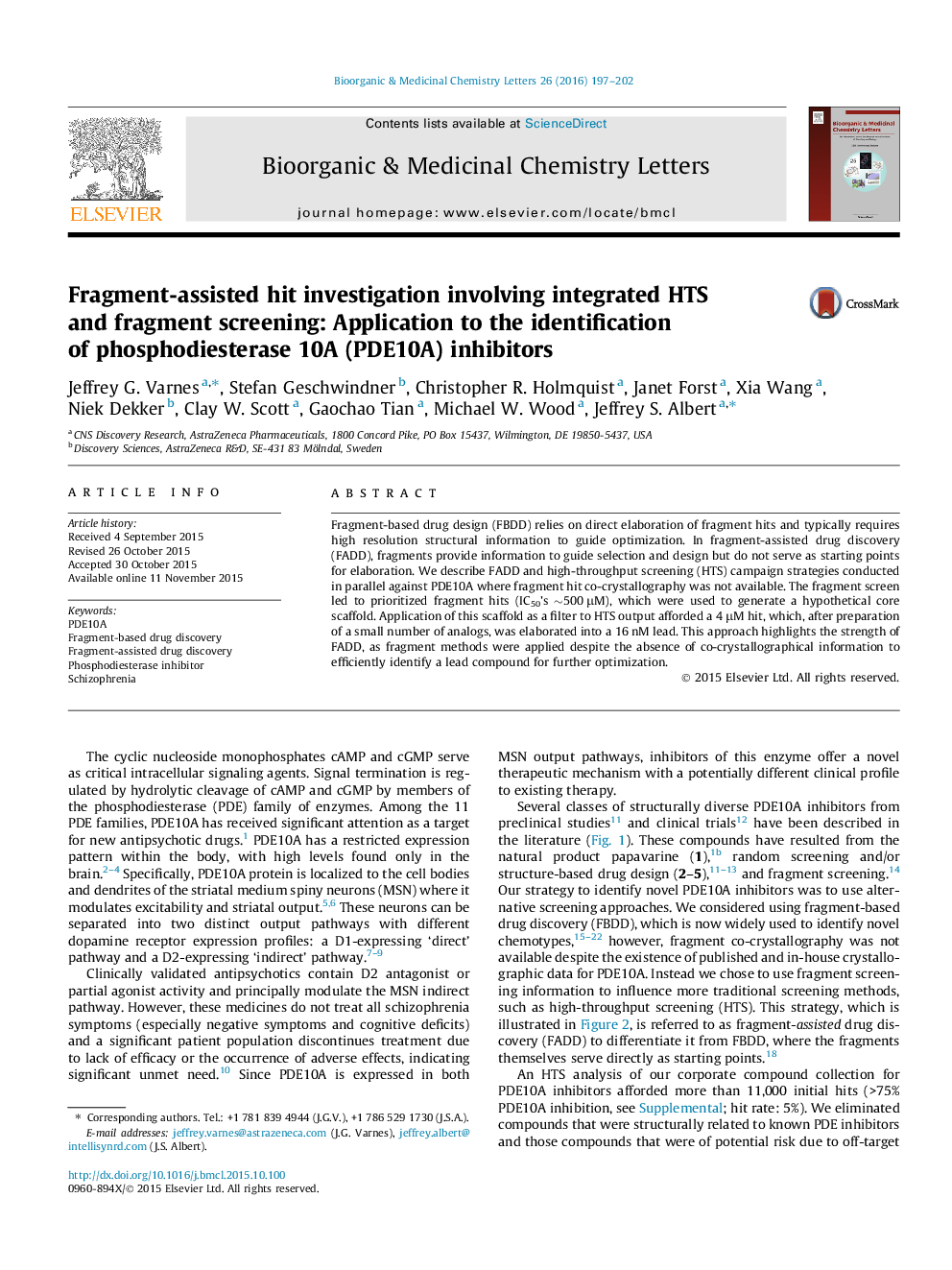| Article ID | Journal | Published Year | Pages | File Type |
|---|---|---|---|---|
| 1368814 | Bioorganic & Medicinal Chemistry Letters | 2016 | 6 Pages |
Fragment-based drug design (FBDD) relies on direct elaboration of fragment hits and typically requires high resolution structural information to guide optimization. In fragment-assisted drug discovery (FADD), fragments provide information to guide selection and design but do not serve as starting points for elaboration. We describe FADD and high-throughput screening (HTS) campaign strategies conducted in parallel against PDE10A where fragment hit co-crystallography was not available. The fragment screen led to prioritized fragment hits (IC50’s ∼500 μM), which were used to generate a hypothetical core scaffold. Application of this scaffold as a filter to HTS output afforded a 4 μM hit, which, after preparation of a small number of analogs, was elaborated into a 16 nM lead. This approach highlights the strength of FADD, as fragment methods were applied despite the absence of co-crystallographical information to efficiently identify a lead compound for further optimization.
Graphical abstractFigure optionsDownload full-size imageDownload as PowerPoint slide
